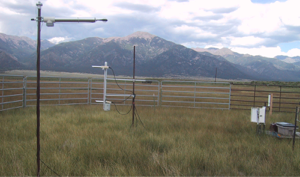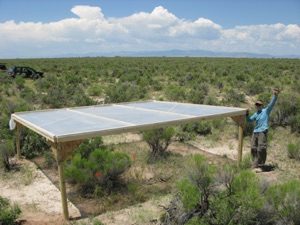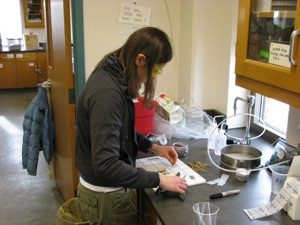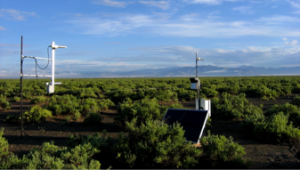I have worked in the San Luis Valley since 1991 to understand the distribution of wetlands and their connection to the shallow ground water table, analyze the potential effects of large scale ground water pumping by AWDI and other water development companies on wetlands in the valley. Our work has been in support of, and funded by the Rio Grande Water Conservation District, as well as Great Sand Dunes National Park, and the State of Colorado Division of Wildlife. Since 1995 we have worked to understand the overall valley evapotranspiration (ET) budget from native plants using Bowen ratio micrometeorology measurements at several stations. From this work we have learned that ET rates are considerably lower than previously estimated, meaning there is less ground water in the valley then had been estimated. The ET work has been conducted in cooperation with my colleague Dr. John Sanderson of the Colorado Nature Conservancy and David Stannard of the USGS. Most recently MS student Julie Kray explored the effects of changing summer rainfall on plant physiological characteristics of the dominant native shrubs (greasewood and rabbitbrush) and grasses (alkali sacaton and salt grass). The issue is that these four species are thought to be phreatophytes, plants that can use groundwater. Ground water in the SLV is largely fed by snowmelt runoff from the Sangre de Cristo and San Juan Mountains, however summer precipitation from the southwestern Monsoon can recharge soil water in mid to late summer. We hypothesized that if the monsoon were to decrease that plants would use more ground water, while if the monsoon increased plants might use less groundwater. Since native plant ET is approximately 30% of the regional water budget, small differences in ground water ET over the huge are of the valley would cause the water balance to change. Julie measured plant xylem pressure potential to understand the functioning of these species of the growing season of two years, and she also analyzed stable oxygen isotope ratios of ground water, soil water and plant stem water to determine where plants were acquiring water seasonally over two years. This was done in an experimental setting of controls, and rain out shelters to reduce of eliminate summer rain, and the rain that was caught by the shelter was added via a sprinkler system to the rain on plots. Publications are listed below.
ChimnerCooperSLV-PLSoil2004
CooperSandersonStannardGroeneveldJHy2006
Groeneveld et al. HYDROL_15823-2007
KrayCooperSanderson2012
Sanderson&CooperJ Hydro 2008



